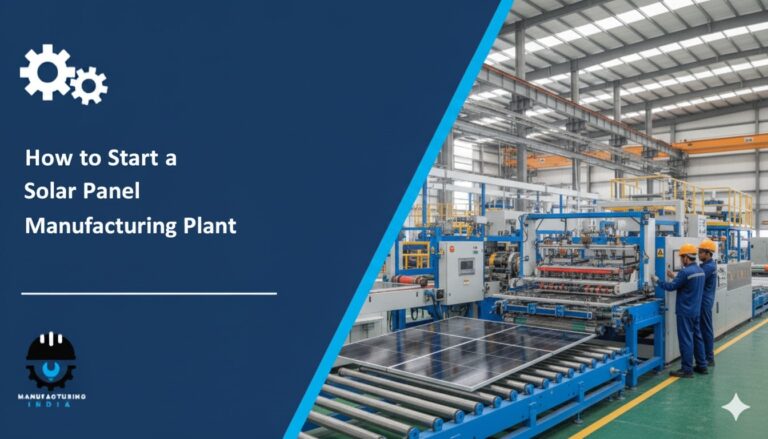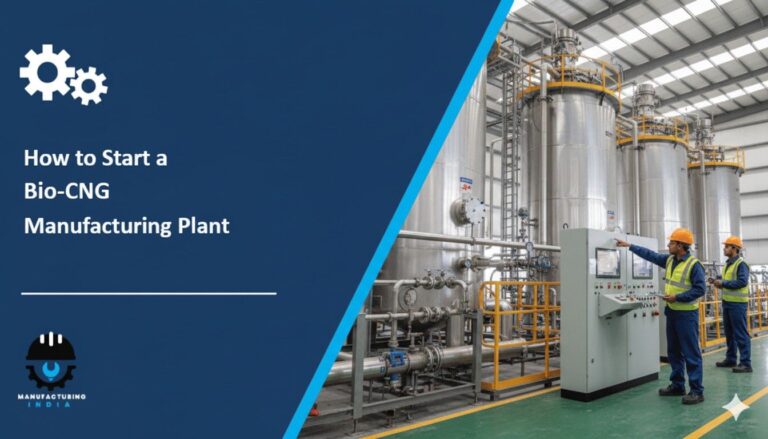
The Glass Fiber Reinforced Polymer (GFRP) manufacturing industry forms the backbone of the global composite materials and advanced engineering sector, which serves various segments from construction and infrastructure to automotive and aerospace industries. Therefore, with constant growth in lightweight material adoption and infrastructure modernization, establishing a glass fiber reinforced polymer GFRP manufacturing plant presents a promising business opportunity.
The GFRP manufacturing industry is a complex and capital-intensive industry with great potential for new entrants. However, this venture requires careful planning, significant investment, and compliance with industrial safety and quality standards. From resin formulation to fiber layup techniques, every phase of the business is to be conducted with utmost precision. Businesses can streamline this process by leveraging on-demand professional resources, which provide feasibility analysis, cost estimations, and requirements for technical necessities.
Step-by-Step Guide to Setup GFRP Manufacturing Facility
Step 1: Conducting Market Research and Feasibility Study
Analyzing the Market:
- Beyond traditional business segments such as construction rebars and industrial gratings, enterprises should consider emerging and upcoming trends. For example, demand for GFRP components in renewable energy infrastructure like wind turbine blades and solar panel frames is soaring, and firms have come up with dedicated product lines featuring high-performance composites and weather-resistant formulations.
- Another aspect is sustainability, where the demand for recyclable resin systems and low-emission manufacturing processes is rising. Several leading composite manufacturers have announced initiatives for transitioning to bio-based resins in production facilities and partnering with certified recycling programs for composite waste.
- Analyze the strategies and advanced technologies offered by significant composite material manufacturers in the market. For instance, advanced pultrusion processes are designed for maximizing fiber content and mechanical strength. These use sophisticated temperature control and resin injection systems to achieve superior performance and dimensional accuracy.
- Businesses need to monitor industry shifts, technological advancements, and infrastructure developments constantly to gain a competitive edge. Expert insights can help enterprises stay informed about market trends, competitor strategies, and innovation landscapes. Companies can make data-driven decisions to enhance their market positioning and drive sustainable growth by using tailored research.
- A robust study is essential, and businesses should also consider regional factors. For instance, a plant near major construction projects might focus on rebars and structural profiles due to market demand, while a facility near coastal areas might cater to corrosion-resistant marine applications and extended product warranties.
- Estimate the capital needed for land acquisition, infrastructure development, machinery, working capital, and research and development. Recent investments in the advanced composites manufacturing sector highlight the significant financial commitments involved in this industry.
Step 2: Business Plan Development
Include a comprehensive financial model, considering initial investment and operating costs. Address sustainability initiatives, which can attract investors and customers. For instance, leading companies are working towards goals of reducing environmental impact through use of renewable energy and closed-loop resin systems. Many have targeted achieving carbon-neutral operations as part of their long-term environmental vision.
- Business Model: Businesses should plan whether to focus on manufacturing standard GFRP products like rebars and gratings, custom-engineered components, automotive parts, infrastructure solutions, contract manufacturing, or a combination of these approaches and build a business model accordingly.
- Funding Strategy: Outline potential funding sources, including equity investment, bank loans, government grants for advanced manufacturing, or strategic partnerships with construction and automotive companies.
- Production Capacity: Define your target production volume based on market analysis and available resources, considering whether to start with small-scale operations focusing on specific product lines or aim for large-scale diversified production.
- Marketing and Sales Strategy: Develop plans for branding, distribution channels including direct sales to contractors, partnerships with engineering firms, distributor networks, and customer acquisition through technical seminars and industry exhibitions.
- Risk Assessment: Identify potential risks, such as raw material price volatility, resin supply chain disruptions, regulatory changes in construction standards, or challenges in quality consistency across batches, and propose mitigation strategies.
Step 3: Navigating Legal Requirements and Obtaining Necessary Permits
Compliance with legal and regulatory frameworks is essential. Key steps include:
- Business Registration: Register your company in accordance with local laws and manufacturing regulations.
- Industrial Safety Approvals: Obtain necessary factory licenses, as GFRP manufacturing involves chemical handling and composite processing that must meet regulatory requirements for worker safety and industrial operations.
- Factory Licenses: Secure licenses required for operating a composite manufacturing facility, including environmental department approvals and pollution control clearances for volatile organic compound emissions.
- Product Certifications: Aim for certifications related to construction materials standards, automotive component approvals, quality management system certifications, and testing facility accreditations to ensure product acceptance and facilitate market entry.
- Quality Certifications: Obtain certifications such as ISO standards for quality management, industry-specific certifications for construction or automotive applications, and testing laboratory approvals for material validation.
Step 4: Selecting an Optimal Location and Develop Infrastructure
Choosing the right location is critical for operational efficiency. Consider factors such as:
- Proximity to Raw Materials: Access to fiberglass suppliers, resin manufacturers, chemical distributors, and reinforcement material providers. Proximity to petrochemical complexes or polymer production centers reduces transportation costs and lead times.
- Logistics and Transportation: Ensure good connectivity to key markets, construction sites, automotive clusters, and export facilities. Access to highways, railways, and ports is essential for distributing finished products and receiving bulky raw materials like glass fiber rovings.
- Utilities Availability: Reliable access to electricity for heating and curing systems, high-quality water for cooling and cleaning operations, compressed air for pneumatic systems, and adequate space for chemical storage facilities with proper ventilation.
- Land Size: Adequate space to accommodate current operations including production areas, resin mixing rooms, curing ovens, quality control laboratories, raw material warehouses, finished goods storage sections, and future expansions for additional production lines.
Step 5: Procuring Advanced Machinery and Quality Raw Materials
Investing in state-of-the-art machinery ensures efficient production and high-quality output. Essential equipment includes:
- Pultrusion Equipment: Continuous pultrusion lines for profiles and rebars, heated die systems with precise temperature control, fiber creel and tensioning systems, resin bath with impregnation stations, pulling mechanisms with controlled speed, and cut-off saws for length specification.
- Filament Winding Systems: CNC-controlled winding machines for pipes and pressure vessels, resin impregnation tanks, mandrel rotation and carriage movement systems, heated curing ovens or chambers.
- Hand Layup and Spray Equipment: Gelcoat spray guns and chopper guns for open mold processes, vacuum bagging equipment for enhanced fiber-to-resin ratios, resin mixing and dispensing systems with accurate metering.
- Compression Molding Presses: Hydraulic presses with heating platens for sheet molding compound processing, mold temperature controllers, material charging and part ejection systems.
- Resin Transfer Molding (RTM) Equipment: Closed mold systems with injection ports, resin mixing and injection machines with pressure control, vacuum systems for resin infusion variants, heated molds for accelerated curing.
- Quality Control Equipment: Universal testing machines for tensile and flexural strength, impact testing equipment, microscopes for fiber distribution analysis, thermal analysis equipment for glass transition temperature, chemical resistance testing chambers, non-destructive testing equipment.
- Auxiliary Systems: Resin storage tanks with temperature control, ventilation and fume extraction systems, personal protective equipment dispensers, material handling equipment including overhead cranes.
Raw Material Requirements:
Source quality materials from reliable suppliers, including E-glass or S-glass fiber rovings, mats, and fabrics, polyester, vinyl ester, or epoxy resin systems, catalysts and accelerators for curing, mold release agents, gelcoat for surface finishing, fillers and additives for specific properties, and appropriate packaging materials that ensure product protection during storage and transportation.
Step 6: Building a Skilled Workforce
Recruiting and training skilled personnel is vital. Key roles include:
- Composite engineers and process engineers for overseeing production processes, optimizing resin formulations, fiber orientation strategies, and maintaining equipment efficiency.
- Quality control specialists to ensure products meet mechanical property specifications and industry standards through rigorous testing protocols.
- R&D team for developing new composite formulations, improving manufacturing processes, creating innovative product designs, and solving technical challenges.
- Sales and technical support professionals to drive market penetration, provide engineering assistance to customers, develop application-specific solutions, and build relationships with contractors and engineers.
- Health and safety officers to ensure adherence to chemical handling regulations, workplace safety protocols, and environmental compliance requirements.
- Production line workers and technicians trained in composite manufacturing techniques, resin mixing, fiber handling, mold operations, and quality inspection procedures.
Companies with strong reputations in the composite materials industry have established comprehensive training programs to develop skilled workers, contributing to their reputation for quality and innovation.
Step 7: Implementing the Production Process
The GFRP manufacturing process involves multiple stages, which vary based on the manufacturing method:
Pultrusion Process (for continuous profiles, rebars):
- Material Preparation: Setting up fiber rovings on creels, preparing resin bath with catalyzed resin mixture, preheating pultrusion die to specified temperature, and checking resin viscosity and gel time.
- Fiber Impregnation: Pulling continuous fiber rovings through resin bath, ensuring complete wetting and impregnation, removing excess resin through wipers or squeegees, and maintaining consistent fiber tension.
- Die Processing: Guiding impregnated fibers into heated pultrusion die, achieving fiber consolidation and resin curing through controlled temperature zones, maintaining pulling speed for optimal cure, and monitoring die pressure and temperature continuously.
- Finishing Operations: Cutting pultruded profiles to specified lengths, surface finishing if required, dimensional inspection and quality checks, applying protective coatings or wraps, and packaging for shipment.
Hand Layup and Spray-Up Process (for large parts, custom shapes):
- Mold Preparation: Cleaning and preparing mold surfaces, applying mold release agents, spraying gelcoat for surface finish (if applicable), allowing gelcoat to cure to tacky stage.
- Lamination: Placing fiber reinforcement layers in mold following design specifications, applying catalyzed resin through brush, roller, or spray methods, consolidating laminate using rollers to remove air bubbles, building up required thickness through multiple layers, and allowing each layer to reach appropriate cure state before adding next.
- Curing and Demolding: Allowing laminate to cure at room temperature or in heated environment, monitoring exotherm temperature during cure, demolding carefully to avoid part damage, and trimming excess material from part edges.
Compression Molding Process (for high-volume parts):
- Material Preparation: Preparing sheet molding compound or bulk molding compound charges, weighing material according to part requirements, preheating material if specified.
- Molding: Placing material charge in heated mold cavity, closing press with controlled pressure, maintaining temperature and pressure for specified cure time, opening press and ejecting finished part.
- Post-Processing: Trimming flash from molded parts, drilling holes or finishing edges as required, surface finishing or painting if needed.
Quality Inspection:
Finished products undergo rigorous quality checks including visual inspection for surface defects and fiber show-through, dimensional measurement against specifications, mechanical testing including tensile strength, flexural strength, and impact resistance, fiber content determination through burn-off tests, chemical resistance testing for specific applications, non-destructive testing for critical components, and final approval with batch documentation.
Step 8: Establishing Marketing and Distribution Channels
A robust marketing and distribution strategy is essential for establishing a strong presence in the market. Consider the following approaches:
- Direct Sales to End Users: Build relationships with construction contractors, infrastructure developers, building material specifiers, and directly supply GFRP rebars, gratings, and structural profiles to project sites with technical support.
- Distributor Network Development: Collaborate with building material distributors, establish partnerships with industrial supply houses, create authorized dealer networks for wider market coverage and regional presence.
- Engineering and Design Community Engagement: Conduct technical seminars and workshops for structural engineers, provide design assistance and engineering calculations, develop case studies demonstrating successful applications, and get products specified in architectural and engineering drawings.
- Industry-Specific Partnerships: Form alliances with marine equipment manufacturers for corrosion-resistant applications, partner with chemical plant constructors for acid-resistant structures, collaborate with water treatment companies for GFRP tanks and piping, or work with renewable energy developers for wind and solar applications.
- OEM Supply Contracts: Supply GFRP components to automotive manufacturers, provide parts to recreational vehicle and trailer manufacturers, partner with industrial equipment makers, or supply to transportation infrastructure projects.
- Export Opportunities: Study international markets with growing infrastructure development and GFRP adoption, comply with their specific material standards, quality certifications, and testing requirements for successful market entry.
Step 9: Ensuring Compliance with Safety and Environmental Standards
GFRP manufacturing involves handling chemicals and composite materials, making regulatory compliance crucial. Key measures include:
- Worker Safety: Implement strict safety protocols for handling resins and catalysts, provide personal protective equipment including respirators for styrene exposure, chemical-resistant gloves and clothing, and train employees on chemical handling, fire safety, and emergency response procedures.
- Chemical Storage and Handling: Establish proper protocols for storing flammable resins and peroxide catalysts in separate, temperature-controlled areas, implement secondary containment for liquid chemicals, maintain material safety data sheets and chemical inventory, and train staff on spill response and first aid procedures.
- Ventilation and Air Quality: Install adequate ventilation systems to control volatile organic compound exposure, implement local exhaust ventilation at resin application points, monitor workplace air quality for styrene and other emissions, and provide respiratory protection where engineering controls are insufficient.
- Waste Management: Establish proper disposal systems for uncured resin waste and contaminated materials, implement recycling programs for cured composite scrap where feasible, manage wastewater from cleaning operations with appropriate treatment, and handle hazardous waste in compliance with environmental regulations.
- Fire Safety: Implement proper storage of flammable materials away from ignition sources, install automatic fire suppression systems in production areas, maintain proper clearances and fire barriers, conduct regular fire drills and equipment inspections, and ensure availability of appropriate fire extinguishers throughout facility.
- Environmental Compliance: Install air pollution control systems for VOC emissions from production areas, monitor emissions to demonstrate regulatory compliance, implement energy-efficient heating and curing systems, and consider adopting low-emission resin systems to reduce environmental impact.
Governments and regulatory bodies worldwide are increasingly enforcing stringent occupational health and environmental regulations for composite manufacturing. Leading companies have pledged to reduce emissions through adoption of closed-mold processes, low-styrene resins, and comprehensive workplace safety programs.
Step 10: Planning for Future Expansion and Innovation
Once the GFRP plant is fully operational, focus on scaling up production and expanding market reach. Key strategies include:
- Increasing Production Capacity: Expand facilities by adding production lines, upgrade to higher-speed pultrusion equipment, implement automated material handling systems, or establish additional manufacturing facilities in different regions to serve diverse markets.
- Process Technology Upgrades: Invest in advanced manufacturing techniques like resin transfer molding for higher-quality parts, automated fiber placement for aerospace applications, implement closed-mold processes to reduce emissions, or adopt vacuum infusion for large structures.
- Product Diversification: Develop new product lines such as GFRP bridge decks and structural beams, corrosion-resistant piping systems, automotive body panels and components, or specialized industrial equipment like storage tanks and vessels.
- Material Innovation: Research and develop next-generation composite formulations, explore bio-based resin systems for sustainability, investigate hybrid composites combining glass with carbon or natural fibers, or develop fire-retardant formulations for building applications.
- Vertical Integration: Consider backward integration by establishing resin compounding capabilities or fiber sizing operations, forward integration by offering installation and engineering services, or develop in-house design and engineering capabilities for custom solutions.
- Strategic Partnerships: Collaborate with resin manufacturers for exclusive formulations, partner with universities and research institutions for advanced materials development, form alliances with construction companies for large infrastructure projects, or work with automotive OEMs for component supply agreements.



